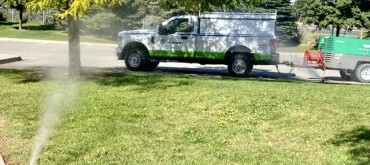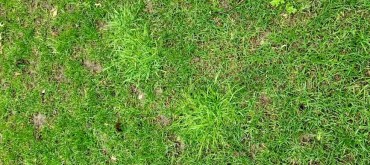We have spent lots of time referring to maintenance macros as deep and infrequent watering, regular mowing no shorter than 3 inches, and a proper fertilizer schedule. Did you know there are many other factors that can have a direct impact on your lawn’s health? Soil types and other landscaped plants play a bigger role than you may initially think in how your lawn grows.
Here in Ontario, we see a variety of different soil structures across different regions that can range from combinations, including clay, loam, sand, or silt. Each of these soil types has a different density associated with it that can directly affect how the roots of your lawn establish, and how easily things like air, water, and nutrients are absorbed. Soils that are more clay based have a higher water holding capacity, but also introduce the most compaction to the roots, making it harder for them to expand and access air & nutrients. More sandy soils are far more naturally aerated however, they do not hold water as well, which can put the lawn are a higher risk of drought stress, and require you to water for longer periods of time. Your lawn prefers the best of both worlds, which leads us to loamy high organic matter soils. The density of loam and organic matter allows for balanced access to air, water, and nutrients, making it much easier to support the lawn’s root system with proper maintenance practices.
Now that we have examined further what is underneath the lawn’s surface, let’s dive into what’s above the lawn that can impact its overall growth. Trees are most commonly discussed as they grow much larger roots that demand most of the nutrients and water in the surrounding area. Their canopy also shelters the lawn from direct sunlight, which, depending on the type of grass you have planted, can be beneficial or detrimental to its environment. Fine fescue grass types do the best under large trees as they don’t require as much sunlight to grow compared to Kentucky Bluegrass. If you have a tree planted on your lawn, it is important to water even deeper (longer period of time) to satisfy the tree roots and reduce the competition. It is also key to cut very high to avoid shocking the grass in an environment where sunlight is already limited. Although trees can provide more competition, they also reduce some of the heat the lawn is exposed to in mid-summer. This can benefit the lawn by keeping it cooler and less likely to experience heat stress.
One of the more discreet variables that not many think of right away is the quality of airflow. Trees and other foliage, like large hedges or bushes, you will want to keep trimmed well to allow proper airflow around the lawn. If this is restricted, the lawn will have a harder time breathing and become more susceptible to overnight disease activity, limiting its ability to improve its overall growth.
If you have any further questions or want to know how your specific landscape is impacting your lawn, you can reach out to our office at any time!





